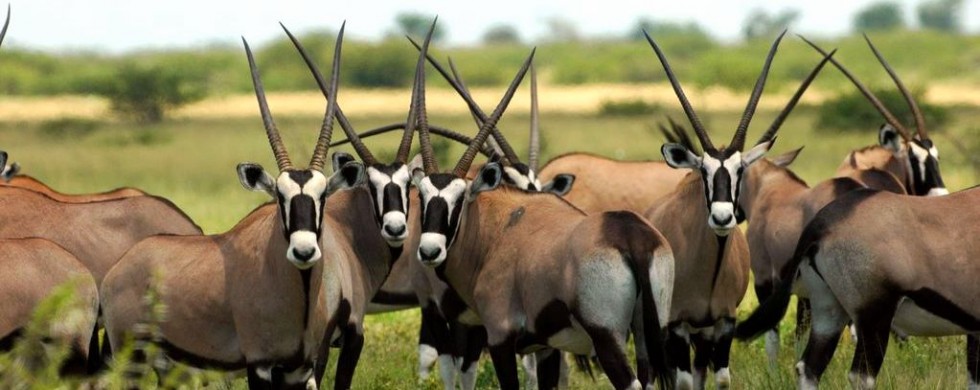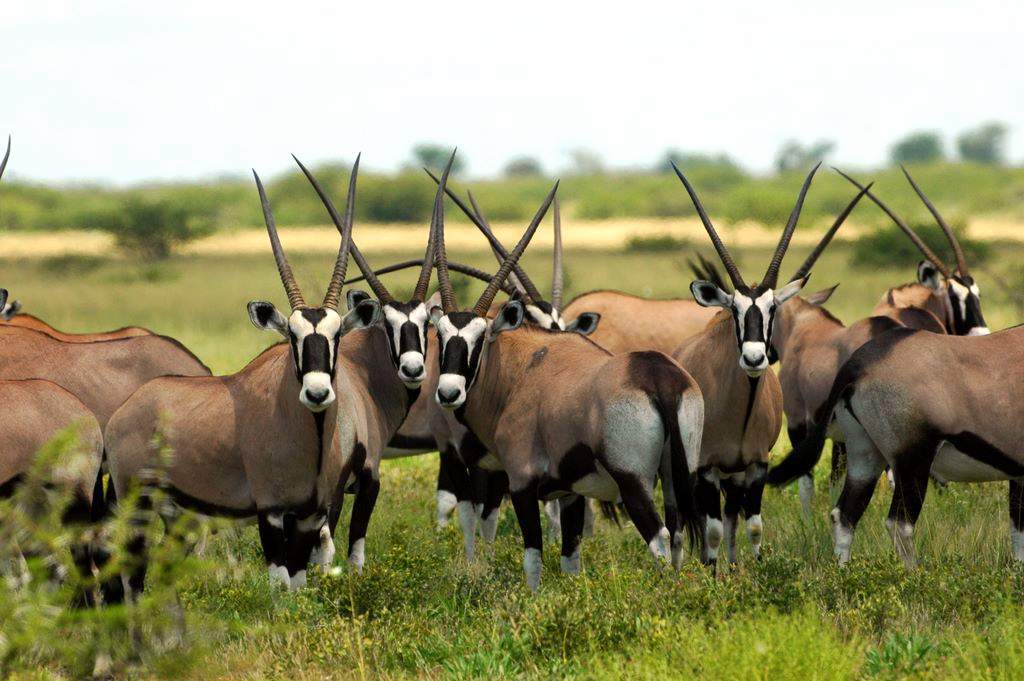
15
2008Very Cool Reindeer – December 2008
Shot of the Month – December 2008
Given it is December I thought I should look for an image that is consistent with the holiday season. The best I could come up with was this photo of some African reindeer.
Ok, ok, they’re not reindeer. They are Gemsbok. Also known as Oryx by some.
And they definitely are not at the North Pole — Gemsbok are typically found in some of the hottest spots on the planet and thrive in the deserts, scrublands, and brushlands of Africa. These chaps were photographed in Botswana in the Kalahari Desert.
Besides their spectacular looks, these creatures are a wonder of adaptation – every aspect of their existence from body shape, to specialized organs, to behaviors, to diet has been perfected to allow these antelopes to survive where most other animals would perish.
While it may seem counterintuitive, being large (about 55” at the shoulder, and up to 550 lbs) helps to survive in the desert. Their surface area is small in proportion to their mass so they do not heat up nor cool down as quickly as smaller animals.
Gemsbok have learned to graze at night when the moisture content of grasses and plants is higher. This allows them to get water when none can be found elsewhere for months at a time. This behavior also allows Gemsbok to be less active during the hottest part of the day. During the day they retreat to the shade whenever possible to avoid overheating. At times they will lie down in the shade with their belly on the cooler sand.
No shade available? In this case, Gemsbok are careful to keep the smallest part of their bodies turned to the sun and the biggest part to the breeze. Their white bellies help to redirect heat and solar radiation from the hot sand away from their bodies.
And we are not done yet. Gemsbok have two more amazing adaptations up their black and white sleeves.
Most mammals maintain a steady body temperature and release heat by sweating. When water is plentiful Gemsbok also sweat and maintain a constant body temperature. But when water is scarce they cannot afford to lose precious moisture in this fashion so they stop perspiring. They reduce some of the heat by panting and the rest is absorbed by allowing their body temperatures to rise by as much as 7° F to 113° F – a temperature that would cause brain damage in most mammals and kill them. Why doesn’t it kill the Gemsbok?
Did you notice the long snout on these fellows? Turns out that the snout is filled with a maze of blood vessels that act like a car radiator. A network of blood vessels is surrounded by veins carrying blood that has been cooled by evaporation from the nasal passages as the animal breathes. As warm blood from the heart passes through this network it is cooled as it exchanges heat with the surrounding veins and lowers the temperature of the blood going to the brain. This heat exchange mechanism can keep the brain 5° F cooler than the rest of the body – the margin between life and death.
Pretty cool, huh?
May you all have a cool yule and a groovy New Year.

